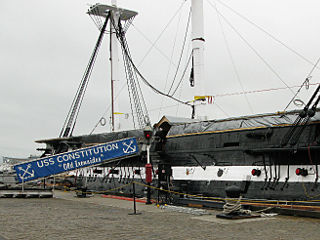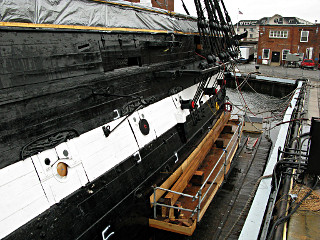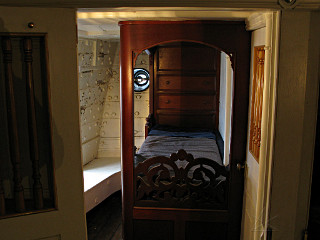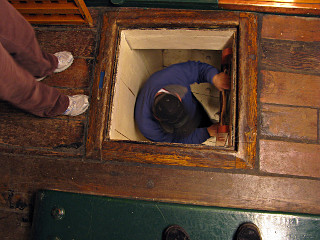
Part 1 of what I hope will be more visits, as there is a lot more of the ship and her infrastructure to see and learn the history of.
Each small image links to a large one -- use your browser controls to navigate back and forth.

|
There is some exterior hull work being done as well, but not quite as enthusiastically while it's still winter. |
| Many of these pictures needed quite a bit of color-correction and other post fixup and may still look a little weird, because of the odd mix of light sources down below. At least there *is* a reasonable amount of light. In the days of lanterns and no electricity, everything would have been much darker inside. As I hate using flash unless absolutely necessary, I went with the "natural" light as best I could in the timeframe we had. I imagine that another visit with more leisure for photography would involve tripods, delayed capture, and frequent manual setting of white-balance. |

|
One of the beds in the captain's quarters, and the light is coming in from
the glass-enclosed area to the left that was a private head hanging off the
side of the stern. This is actually a "modernized" berth, whereas in the
War of 1812 era the captain would have slept in a hanging cot. This berth is
just about the same size as the Thermarest-based
car sleeping rig I spent quite a few
nights in while road-tripping cross-country last summer, so that probably
qualifies as "luxurious" on the scale of shipboard sleeping quarters.
The odd round bluish thing is daylight coming in through a primitive attempt at an operable porthole, which there are several of pierced through the hull here and there and referred to as "airports". These weren't in the ship's original design but were added a little later in an attempt to bring in air and maybe a little light, especially on the berth deck, but they often leak even when secured shut with a large bolt. |

|
Down the hatch! This tiny passage leads down to the aft powder magazine. |
|
Hogging is evidently a major issue in keeping almost all the large wooden
ships intact, and is mentioned frequently in numerous articles about
restoration and maintenance. For generous amounts of further reading:
The "ussconstitution.navy.mil" website is moving to one or both of
The museum site and its ancillary domain have some more info but geared more toward education about lifestyles and battle tactics of the times rather than shipboard technical detail. I also found more technical discussion at the USS Constellation site, describing similar preservation efforts. As with any topic you could name there are also some independent naval-history enthusiast sites around the internet, such as hazegray [whose images all seem to be unavailable at the moment, unfortunately] and the HSNA site that has some very cool online versions of books and manuals from various periods. |